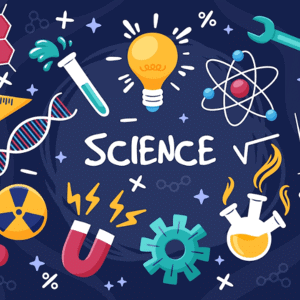Basics of Internet - 1 - Information and Communication Technology (ICT) Notes
Introduction
The Internet is a global system of interconnected computer networks that use the standard Internet protocol suite (TCP/IP) to link several billion devices worldwide. It is also known as “network of networks” that consists of millions of private, public, academic, business, and government networks.
Internet Work: In Internet, most computers are not connected directly to the Internet. Rather they are connected to smaller networks, which in turn are connected through gateways to the Internet backbone.
- Gateway: A gateway is a device the connects dissimilar networks.
- Backbone: A backbone is a central interconnecting structure that connects one or more networks just like the trunk of a tree or the spine of a human being.

Who governs the Internet?
The Internet is not governed by any particular body. It is coordinated by many volunteer organizations.
- The Internet Architecture Board (IAB) is responsible for approving standards and allocating resources.
- The Internet Engineering Task Force (IETF) is responsible for discussing and investigating the operational and technical problems of the Internet.
- The InterNIC is responsible for providing registration services to the Internet community.
Internet Function: The World Wide Web commonly known as the Web or www developed founded by Tim Berners – Lee in 1989, is a system of interlinked hypertext documents that are accessed via the Internet. These multimedia pages are ever-changing. A web browser (commonly referred to as a browser) is a software application for retrieving, presenting and traversing information resources on the World Wide Web.
Various Applications of the Internet are:
- Exchange messages using e-mail (Electronic mail).
- Transfer files as well as software.
- Browse through information on any topic on the web.
- Communicate in real time (chat) with others connected to the Internet.
- Search databases of government, individuals and organizations.
- Read news available from leading newsgroups.
- Send or receive animation and picture files from distant places.
- Set up a site with information about your company’s products and services.
- The seeds of the Internet were planted in 1969 when the US Department of Defense sponsored a project named ARPANET.
Connection of Internet
- Through Dial-up Connection: A dial-up connection is a temporary connection, set up between your computer and ISP (Internet Service Provider)server. A dial-up connection is established using a modem, which uses the telephone line to dial up the number of ISP server.
- Through Broadband Connection: The term broadband is short for broad bandwidth. Bandwidth refers to the amount of data that a signal or circuit can carry. Broadband connection speeds are measured in megabits per second (Mbps).
- Wireless Connection: These days we can also connect to the Internet wirelessly.
- Wi-Fi: It refers to Wireless Fidelity, which lets you connect to the Internet without a direct line from your PC to the ISP.
- WiMAX: It is a wireless digital communication system. WiMAX can provide broadband wireless access (BWA) up to 50 km for fixed stations
 Various features of a Web Browser
Various features of a Web Browser
- Menu bar: The menu bar, located at the very top of the screen, can be accessed using the mouse. Actions that are in black can be performed, while actions that cannot be performed will be in gray or lightened.
- Toolbar: The toolbar is located at the top of the browser; it contains navigational buttons for the Web. Basic functions of these buttons include:
- Location bar: The location bar, below the toolbar, is a box labeled "Location," "GoTo," or "Address." You can type in a site's address, and press the Return or Enter key to open the site.
- Status bar: The status bar is located at the very bottom of the browser window. You can watch the progress of a web page download to determine if the host computer has been contacted and text and images are being downloaded.
- Scroll bar: The scroll bar is the vertical bar located on the right of the browser window. You can scroll up and down a web page by placing the cursor on the slider control and holding down the mouse button.
- A website is a set of related web pages served from a single web domain.
- The Uniform Resource Locator abbreviated as URL is the Address for websites. Most of them begin with HTTP (Hyper Text Transfer Protocol), followed by a colon and two slashes. In most web browsers, the URL of a web page is displayed on top inside an address bar.
- The hyperlink is a reference to data that the reader can directly follow either by clicking or by hovering or that is followed automatically.
- An email attachment is a computer file sent along with an email message. One or more files can be attached to an email message, and be sent along with it to the recipient. The first email was sent by Ray Tomlinson to himself in 1971.
- CC (Carbon Copy) in email indicates those who are to receive a copy of a message addressed primarily to another. The list of CCed recipients is visible to all other recipients of the message.
- An additional BCC (blind carbon copy) field is available for hidden notification; recipients listed in the BCC field receive a copy of the message but are not shown on any other recipient's copy (including other BCC recipients).
- An Internet Protocol address (also known as an IP address) is a numerical label assigned to each device (e.g., computer, printer) participating in a computer network. It acts as an identifier for a computer. It is a unique address for every computer.
- Top-level domain: Each part of a domain name contains certain information. The first field is the hostname, identifying a single computer or organization. The last field is the top-level domain, describing the type of organization and occasionally country of origin associated with the address. For e.g. - .com – Commercial, .edu – Education

|
30 videos|19 docs|8 tests
|
FAQs on Basics of Internet - 1 - Information and Communication Technology (ICT) Notes
| 1. What is the Internet and how does it work? |  |
| 2. What are the primary components of the Internet? |  |
| 3. What is the significance of IP addresses in the Internet? |  |
| 4. How do browsers and search engines differ? |  |
| 5. What are the common security risks associated with using the Internet? |  |

























